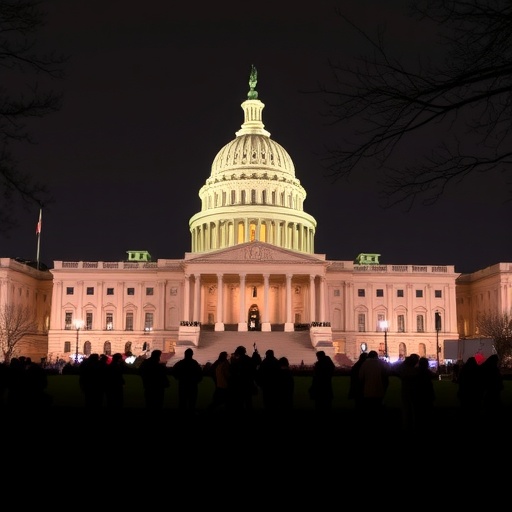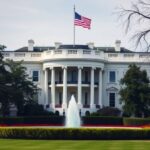U.S. Government shutdown Enters Third Week: Over 500,000 Federal Workers Miss First Full Paycheck in Congressional Deadlock
In a stark reminder of political gridlock’s human cost, the U.S. Government shutdown has stretched into its third week, leaving more than 500,000 federal workers without their first full paycheck since the funding impasse began. As families across the nation brace for holiday hardships, lawmakers in Congress and the Senate remain locked in a bitter standoff over border security and spending priorities, with no immediate resolution in sight.
- Federal Workers Feel the Squeeze: Stories of Strain and Sacrifice
- Senate Deadlock Deepens: Key Bill Fails to Advance Amid Partisan Clashes
- House of Representatives Pulls Back: Votes Canceled, Uncertainty Looms
- Economic Fallout Widens: From National Parks to Global Markets
- Paths Forward: Bipartisan Talks and Potential Breakthroughs on Horizon
Federal Workers Feel the Squeeze: Stories of Strain and Sacrifice
For many federal workers, the Government shutdown isn’t just a headline—it’s a personal crisis unfolding in real time. Take Sarah Jenkins, a 42-year-old IRS auditor from Virginia, who has worked for the federal government for 15 years. “I’ve always known the job came with risks like this, but nothing prepares you for seeing that zero on your direct deposit,” Jenkins shared in an emotional interview with local media. Like thousands of others, she’s furloughed without pay, dipping into savings to cover rent and groceries for her two children.
According to the Office of Personnel Management, approximately 800,000 federal employees were affected at the shutdown’s outset on December 22, with about 380,000 now working without compensation and the rest sent home. This marks the longest government shutdown in U.S. history, surpassing the 21-day record set in 1995-1996. The immediate fallout? Over 500,000 workers missed their biweekly paycheck on January 11, a payday that typically injects billions into local economies.
Financial experts warn of cascading effects. A report from the National Foundation for Credit Counseling estimates that furloughed workers could face an average shortfall of $4,000 per month, pushing many toward high-interest credit cards or payday loans. In communities near federal installations—like Quantico, Virginia, or NASA’s Goddard Space Flight Center in Maryland—local businesses are already reporting dips in sales. Grocery stores, restaurants, and even holiday retailers are feeling the pinch as federal workers tighten their belts.
Personal anecdotes abound. Coast Guard Petty Officer Maria Gonzalez, stationed in Miami, described rationing meals and skipping holiday gifts for her family. “We’re patriots, but this feels like a betrayal,” she said. Support networks are stepping up: Nonprofits like the Federal Employee Education & Assistance Fund have distributed over $1 million in emergency aid, but demand far outstrips supply. As the shutdown drags on, psychologists note rising stress levels, with calls to employee assistance programs surging by 40%.
Senate Deadlock Deepens: Key Bill Fails to Advance Amid Partisan Clashes
In Washington, the Senate has become the epicenter of inaction, failing to advance a clean funding bill that could have reopened the government and restored paychecks to federal workers. Last Thursday, Senate Majority Leader Mitch McConnell blocked a procedural vote on a Democratic-led measure to end the shutdown, citing insufficient support for President Trump’s border wall demands. The vote fell short by seven votes, with four Republicans joining Democrats in a show of bipartisan frustration.
“This isn’t about politics; it’s about people,” thundered Senate Minority Leader Chuck Schumer during floor debates. “Federal workers are missing paychecks, national parks are shuttered, and our economy is at risk—all because of one issue.” On the other side, Senate Majority Whip John Cornyn defended the stance, arguing that comprehensive immigration reform, including wall funding, must be addressed. “We can’t keep kicking the can down the road,” Cornyn stated in a press conference.
The Senate‘s paralysis mirrors broader Congressional dysfunction. Negotiations have stalled over the $5.7 billion requested for border barriers, with Democrats insisting on protections for Dreamers and increased humanitarian aid. Fiscal conservatives in the Senate, meanwhile, push for deeper spending cuts elsewhere. A recent poll by Quinnipiac University shows 54% of Americans blame President Trump for the shutdown, while 33% point to Democrats—highlighting the political stakes as midterm reflections linger.
Behind the scenes, anonymous sources reveal exhaustion among staffers. Late-night sessions have yielded little progress, with one Senate aide confiding, “We’re all burned out, but no one’s willing to blink first.” The chamber’s rules, requiring 60 votes for cloture, have amplified the deadlock, turning what could be a routine appropriations process into a high-stakes standoff.
House of Representatives Pulls Back: Votes Canceled, Uncertainty Looms
Across Capitol Hill, the House of Representatives has effectively hit pause, canceling all votes scheduled for next week in a move that underscores the government shutdown‘s paralyzing grip. Speaker Nancy Pelosi announced the decision Friday, citing a lack of quorum and the futility of proceeding without Senate concurrence. “We won’t waste time on show votes when real families are suffering without paychecks,” Pelosi declared, urging her counterparts to prioritize reopening the government.
This cancellation affects over a dozen bills, including disaster relief for hurricane-hit regions and farm aid extensions—measures that could provide indirect relief to shutdown-impacted areas. In the House, Democrats hold a slim majority, but internal divisions persist. Progressive members demand a clean continuing resolution, while moderates from border states advocate compromise.
Historically, House actions during shutdowns have been symbolic, but this outright halt is unprecedented. A Congressional Budget Office analysis projects that each week of closure costs the economy $1.5 billion in lost productivity, with federal workers‘ unpaid labor adding an invisible toll. House Minority Leader Kevin McCarthy criticized the move as “partisan theater,” insisting that any funding bill must include wall provisions to honor the president’s agenda.
Stakeholders beyond Congress are voicing alarm. The U.S. Chamber of Commerce warned of supply chain disruptions, particularly in defense contracting, where furloughs have idled 25,000 workers at firms like Lockheed Martin. Small business owners near federal facilities, such as those in Washington’s NoMa district, report 20-30% revenue drops, exacerbating the ripple effects of missed paychecks.
Economic Fallout Widens: From National Parks to Global Markets
The government shutdown‘s tentacles extend far beyond federal workers and Congress, reshaping daily life and economic stability nationwide. National parks, museums, and monuments remain closed, denying access to 400 million annual visitors and costing states like California and Florida millions in tourism revenue. Yosemite National Park, for instance, has seen rangers unpaid yet patrolling minimally, leading to safety concerns and environmental risks.
Financial markets have reacted with volatility; the Dow Jones dipped 1.2% last week amid fears of prolonged uncertainty. Economists at Moody’s Analytics forecast a 0.1% GDP shave for the fourth quarter if the shutdown persists into February, with low-income households hit hardest. Food stamp programs, reliant on USDA funding, face delays, potentially affecting 40 million recipients. The IRS, operating on skeleton staff, warns of slowed tax processing, which could delay refunds averaging $2,800 for millions of Americans.
Internationally, the impasse erodes U.S. credibility. At the World Economic Forum in Davos, Treasury Secretary Steven Mnuchin downplayed impacts but acknowledged “short-term disruptions.” Allies like Canada and the EU express concern over delayed trade deals and FDA inspections, which have halted imports of critical medical devices. Domestically, veteran services are strained; the VA reports backlogs in benefits claims, leaving 300,000 claims in limbo.
Community responses highlight resilience. In Colorado Springs, near the Air Force Academy, local food banks have seen a 50% uptick in visits from federal workers. Initiatives like “Shutdown Angels,” a grassroots crowdfunding effort, have raised $500,000 to bridge paycheck gaps. Yet, experts caution that without swift action from Congress and the Senate, these stopgaps may crumble under sustained pressure.
Paths Forward: Bipartisan Talks and Potential Breakthroughs on Horizon
As the government shutdown grinds into its third week, glimmers of hope emerge from backchannel negotiations. White House officials hint at a possible compromise framework, potentially tying wall funding to DACA protections—a deal floated by a group of moderate Senate Republicans. Senate negotiations, led by figures like Lindsey Graham and Dick Durbin, aim for a vote by mid-January, though skeptics abound.
President Trump, in a recent tweetstorm, reiterated his resolve but signaled openness to phased funding. “Great federal workers deserve their paychecks—let’s make a deal that secures our borders,” he wrote. Democratic leaders, including Pelosi, have conditioned support on humanitarian priorities, but private talks suggest movement. The Congressional Budget Office projects back pay upon resolution, but interest on loans and lost savings won’t be recouped easily.
Looking ahead, analysts predict several scenarios: a short-term continuing resolution to buy time, full appropriations by month’s end, or escalation if hardliners prevail. Advocacy groups like the Partnership for Public Service urge immediate action, estimating $3 billion in total economic damage by February. For federal workers, the wait is agonizing, but history shows shutdowns eventually end—often with lessons learned the hard way. As one Capitol Hill veteran put it, “This Congress must choose: governance or gridlock? The clock is ticking.”









